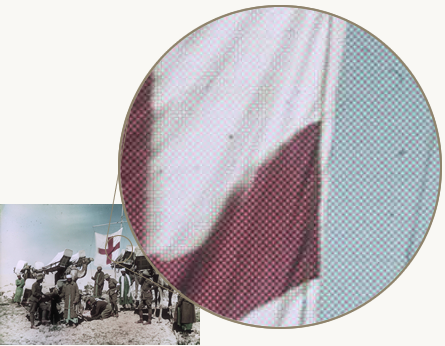Captured in colour: rare photographs from the First World War - Elusive colour: Paget colour system
The Memorial’s small collection of colour images taken during the First World War were made using a colour photographic system patented in Britain in 1912 by G. S. Whitfield and marketed by the Paget Prize Plate Company.
The Paget system was a development of the classic colour screen plate system using two glass plates, one of which was the colour screen while the other was a standard black-and-white negative. The Paget colour screen plate comprised a series of red, green and blue filters, laid down in a regular pattern of lines to form a réseau, or matrix. One of the claimed advantages of the Paget system was the use of separate “taking” and “viewing” screen plates. Because the negatives of the time were so “slow”, the colours in the taking screen plate were diluted, which let more light through to the negative, resulting in a quicker exposure. The viewing screen with more intense colour was used in combination with the positive image.
The sale of Paget colour plates enjoyed moderate success up to 1914. In 1920 this plate was renamed Duplex and continued to be sold for a few more years.

Detail of a paget plate

Magnified view of the colour screen used in the Paget colour photography system.